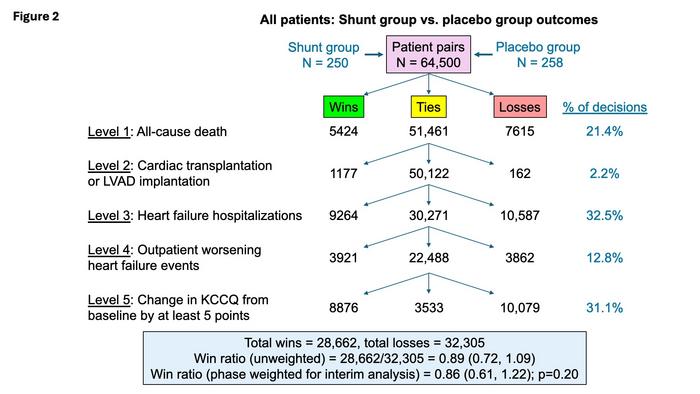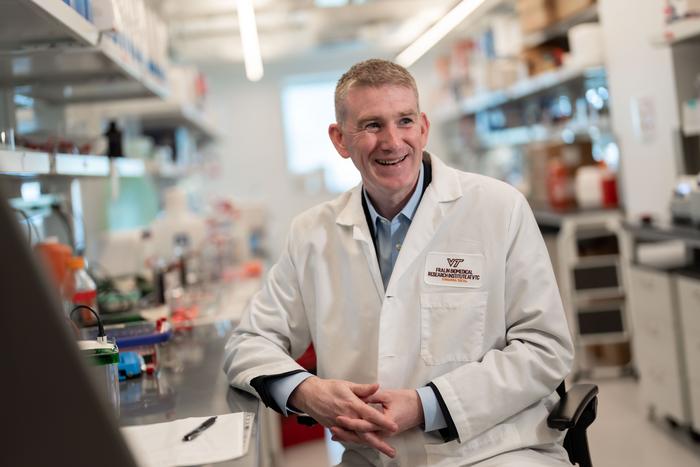Hydrogen flight looks ready for take-off with new advances
The possibility of hydrogen-powered flight means greater opportunities for fossil-free travel, and the technological advances to make this happen are moving fast. New studies from Chalmers University of Technology, in Sweden, show that almost all air travel within a 750-mile radius (1200 km) could be made with hydrogen-powered aircraft by 2045, and with a novel […]

The possibility of hydrogen-powered flight means greater opportunities for fossil-free travel, and the technological advances to make this happen are moving fast. New studies from Chalmers University of Technology, in Sweden, show that almost all air travel within a 750-mile radius (1200 km) could be made with hydrogen-powered aircraft by 2045, and with a novel heat exchanger currently in development, this range could be even further.
“If everything falls into place, the commercialisation of hydrogen flight can go really fast now. As early as 2028, the first commercial hydrogen flights in Sweden could be in the air,” says Tomas Grönstedt, Professor at Chalmers University of Technology, and Director of the competence centre TechForH2* at Chalmers.

Credit: Cranfield University
The possibility of hydrogen-powered flight means greater opportunities for fossil-free travel, and the technological advances to make this happen are moving fast. New studies from Chalmers University of Technology, in Sweden, show that almost all air travel within a 750-mile radius (1200 km) could be made with hydrogen-powered aircraft by 2045, and with a novel heat exchanger currently in development, this range could be even further.
“If everything falls into place, the commercialisation of hydrogen flight can go really fast now. As early as 2028, the first commercial hydrogen flights in Sweden could be in the air,” says Tomas Grönstedt, Professor at Chalmers University of Technology, and Director of the competence centre TechForH2* at Chalmers.
Some of these technological advances can be seen inside the Chalmers wind tunnels, where researchers test airflow conditions in cutting edge facilities. Here, more energy-efficient engines are being developed that pave the way for safe and efficient hydrogen flight for heavy-duty vehicles.
Future of short-range hydrogen aviation for Nordics
For hydrogen-powered aviation, short and medium-range flights are the closest to being realised. A recently published study from Chalmers shows that hydrogen-powered flights have the potential to meet the needs of 97 percent of all intra-Nordic flight routes and 58 percent of the Nordic passenger volume by 2045.
For this study, the researchers assumed a maximum flight distance of 750 miles and the use of an existing aircraft model adapted for hydrogen power. The study, led by doctoral student Christian Svensson in Tomas Grönstedt’s research group, also showcased a new fuel tank that could hold enough fuel, was insulated enough to hold the super-cold liquid hydrogen and at the same time was lighter than today’s fossil-based fuel tank systems.
Novel heat exchangers for better fuel consumption
Heat exchangers are a vital part of hydrogen aviation, and they are a key part of the technological advancements taking place. To keep the fuel systems light weight, the hydrogen needs to be in liquid form. This means that the hydrogen is kept supercool in the aircraft, typically around -250 degrees Celsius. By recovering heat from the hot exhausts of the jet engines, and by cooling the engines in strategic locations they become more efficient. To transfer the heat between the supercool hydrogen and the engine, novel types of heat exchangers are needed.
To meet this challenge, researchers at Chalmers have been working for several years to develop a completely new type of heat exchanger. The technology, which is now patent pending by partner GKN Aerospace, takes advantage of hydrogen’s low storage temperature to cool engine parts, and then uses waste heat from the exhaust gases to preheat the fuel several hundred degrees before it is injected into the combustion chamber.
“Every degree increase in temperature reduces fuel consumption and increases range. We were able to show that short- and medium-haul aircraft equipped with the new heat exchanger could reduce their fuel consumption by almost eight percent. Considering that an aircraft engine is a mature and well-established technology, it is a very good result from a single component,” says Carlos Xisto, Associate Professor at the Division of Fluid Mechanics at Chalmers, and one of the authors of the study.
The researchers also note that with more optimisation, this type of heat exchanger technology in a regular Airbus A320 commercial aircraft could provide an improved range of up to ten percent, or the equivalent of the Gothenburg-Berlin route (approximately 450 miles).
Sweden pledges big investments, despite challenges
The work to develop solutions for hydrogen aviation of the future is taking place on a broad front, with governments, universities and private companies working together. In Sweden, the innovation cluster, Swedish Hydrogen Development Centre (SHDC), brings together key players, including industry leaders and experts from academia. At a recent SHDC seminar, researchers from Chalmers presented their work and several commercial companies testified to major investments in hydrogen flights in the coming years. Whilst the technology is well advanced, the challenges lie rather in the large investments required, and in developing infrastructure, business models and partnerships to be able to produce, transport and store the hydrogen so that the transition to hydrogen flight is possible. A total transition is expected to require around 100 million tonnes of green hydrogen annually.
“There are industry expectations that 30–40 percent of global aviation will be powered by hydrogen by 2050. It is likely that for a number of years to come, we will need a mix of aircraft that run on electricity, less environmentally harmful e-jet fuel and hydrogen. But every aircraft that can be powered by hydrogen from renewable energy reduces carbon dioxide emissions,” says Tomas Grönstedt.
Within TechForH2, there are good conditions to take on the hydrogen challenge, and with a budget of SEK 162 million (equivalent USD 15.5 million), the competence centre can contribute to the development of a number of different research areas that link hydrogen and heavy transport.
Read more about the new studies:
- Future Nordic aviation needs can be met by hydrogen
- Heat exchange promising technology for hydrogen-powered air traffic
More about the scientific articles
The article Hydrogen fuel cell aircraft for the Nordic market has been published in the International Journal of Hydrogen Energy and is written by Christian Svensson, Amir A.M Oliviera and Tomas Grönstedt. The researchers are active at Chalmers University of Technology and the Federal University of Santa Catarina in Brazil.
The research has been funded by the Chalmers-led competence center TechForH2, through grants from the Swedish Energy Agency and the participating partners Volvo, Scania, Siemens Energy, GKN Aerospace, PowerCell, Oxeon, RISE, Stena Rederier AB, Johnsson Matthey, Insplorion, and Chalmers.
The scientific article Compact heat exchangers for hydrogen-fueled aero engine intercooling and recuperation has been published in the journal Applied Thermal Engineering and is written by Alexandre Capitao Patrao, Isak Jonsson, Carlos Xisto, Anders Lundbladh and Tomas Grönstedt. The authors are active at Chalmers University of Technology and at GKN Aerospace Sweden.
The technology has been developed within the EU project ENABLEH2 and the PATH project, which was funded by Chalmers’ Transport Area of Advance. The projects ran between 2018-2022, and then the infrastructure was constructed that was then used to test new engine components and make simulations. At Chalmers’ TechForH2 centre, research is underway to further develop the technology.
The research has also received support from the EU programme Horizon 2020 and the Swedish Research Council.
More about TechForH2
- TechForH2 is a competence centre for multidisciplinary hydrogen research with the overall aim of developing new technology in hydrogen propulsion for heavier vehicles as an important step in the transition to a fossil-free transport system.
- TechForH2 is established by Chalmers University of Technology, Sweden, and is a joint venture together with Rise, Volvo, Scania, Siemens Energy, GKN Aerospace, PowerCell, Oxeon, Insplorion, Johnson Matthey and Stena.
- With funding from Chalmers University of Technology, the Swedish Energy Agency and the centre’s partners, the centre’s total budget amounts to almost SEK 162 million over a five-year period in a first phase, with the possibility of extension for another five years.
- The centre conducts research in a number of areas, such as the development of materials, production, heat management, fuel cells, vehicle systems, sensors, safety and a number of societal aspects of a transition to hydrogen operation of heavy transport.
Read more about TechForH2 at Chalmers.
More about hydrogen and hydrogen flight:
- Hydrogen, H2, is an invisible, odorless, volatile gas that liquefies at about -250 degrees Celsius (20 Kelvin).
- If the hydrogen is produced using renewable energy, it is free of carbon dioxide emissions. This is known as ‘green hydrogen’.
- Hydrogen flights can be powered either electrically, using fuel cells that convert the hydrogen into electricity through catalysis, or with jet engines, where the hydrogen is burned in a gas turbine.
- Hydrogen contains more energy per kilogramme than today’s kerosene, and also has the advantage that the residual product of combustion is mainly water vapour.
- The gas is highly flammable if mixed with air, which is why high-efficiency sensors are necessary.
- In industry, hydrogen is currently used in the production of, for example, fossil-free steel.
For more information, please contact:
Tomas Grönstedt, Professor, Division of Fluid Mechanics, Department of Mechanics and Maritime Sciences, Chalmers University of Technology, Sweden, Director of the competence centre TechForH2, tomas.gronstedt@chalmers.se, +46 31 772 14 55
Carlos Xisto, Associate Professor, Division of Fluid Mechanics, Department of Mechanics and Maritime Sciences, Chalmers University of Technology, Sweden, carlos.xisto@chalmers.se, +46 31 772 14 58
Both the researchers speak English, and Carlos Xisto also speaks Portuguese, and they may be available for live and pre-recorded interviews.
Journal
Applied Thermal Engineering
DOI
10.1016/j.applthermaleng.2024.122538
Method of Research
Experimental study
Subject of Research
Not applicable
Article Title
Compact heat exchangers for hydrogen-fueled aero engine intercooling and recuperation
Article Publication Date
15-Apr-2024
COI Statement
The authors declare that they have no known competing financial interests or personal relationships that could have appeared to influence the work reported in this paper.
What's Your Reaction?

































